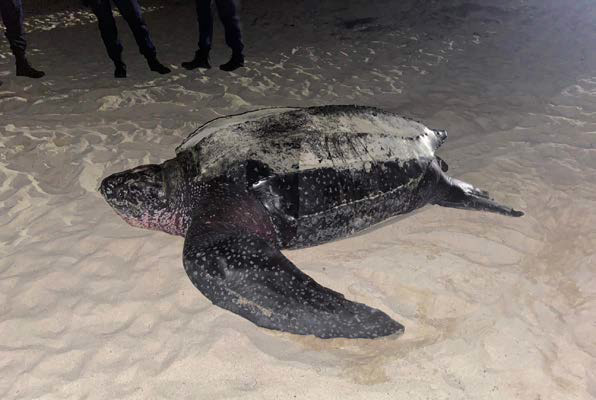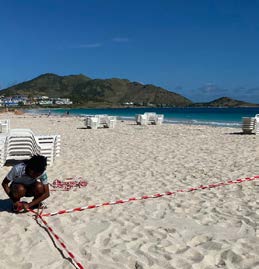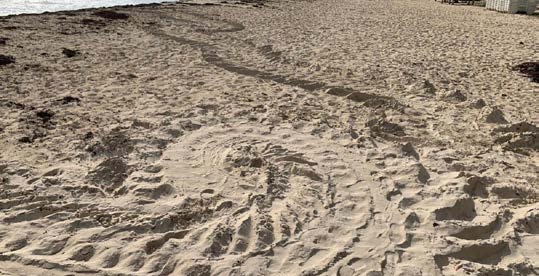Turtles Alone On The Beaches
The beaches were closed while the island was in confinement, which means the volunteer team created by the Réserve Naturelle was not able to monitor the egg-laying activities of sea turtles between March 17th and May 11st. However, witnesses have reported five traces typical of leatherback turtles on the beach in Orient Bay, which has been the most popular egg-laying spot as of March 1st. The nests have been protected with the help of security tape, and the good news about being confined means that tranquility is guaranteed for the nest and the hatching, which in theory maximizes the chances of success. The Réserve noted three egg-laying instances at 11-day intervals, and it is most likely the same leatherback turtle, as they have a tendency to lay their eggs several times in the same place about every eleven days.



















